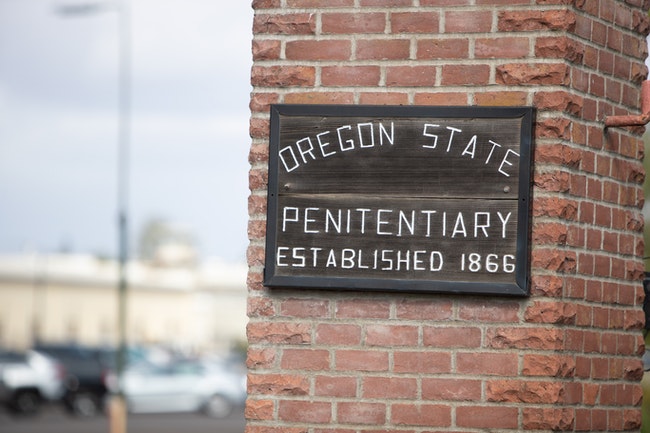 (Amanda Loman/Salem Reporter)
(Amanda Loman/Salem Reporter)
For more than ten years, Marion County commissioner Kevin Cameron said county officials have sought programs to help get people out of the criminal justice system and back into their communities.
“It’s been a big part of our culture in that people deserve a second chance,” he said.
Now, they’re adding a new program to help: peer support specialists who will help people from underserved communities complete their supervision and develop a plan to address their most high-risk needs.
Cameron was still in the Oregon Legislature when the Justice Reinvestment Act was passed during the 2013 session, creating a state grant program that funds community-based sanctions and services which help keep people out of state prisons.
The intent is partly to save public money in the long-term by reducing the need to pay for incarceration, which is costly.
Marion County has received funding from the Justice Reinvestment Grant Program every year since the passing of HB 3194, he said.
The county board of commissioners unanimously approved the grant again at a Jan. 26 meeting.
The roughly $4.9 million grant, a $600,000 increase from the county’s last award, will support nine Marion County Sheriff’s Office programs dedicated to prison diversion and helping people leaving prison reenter the community without reoffending.
The grant would be retroactive to July 1, 2021, and last through Dec. 31, 2023, according to an agenda item.
“What I want people to know is that this doesn’t just impact the individual that’s being provided the service. It’s affecting their families, and most of these folks have spouses or partners and children,” commissioner Danielle Bethell said at the meeting just before voting to approve the grant. “It’s breaking the cycle of these kids’ potential futures of being in the system long-term, and I think you can’t really put a price on that.”
According to the grant application, the largest allocations of the grant funding are:
– Around $1.4 million for the SB 416 Prison Diversion Program, which provides substance abuse treatment, mentoring and case management. The program served 48 people from 2019-2021, 12 fewer than their targeted number.
– About $800,000 for the Transition from Jail to Community Program, which aims to lower the number people returning to jail through cognitive skills classes and other services for people in custody at the Marion County Transition Center, a minimum-security alternative to jail where they work jobs or do community service. It served nearly 1,070 people from 2019-2021, around 570 more than their target.
– Around $400,000 for victim services through the Center for Hope and Safety to support victims of domestic violence, sexual assault, stalking and human trafficking, as well as Liberty House to support children who have been physically abused, sexually abused or neglected and their families.
– Around $400,000 for Student Opportunity for Achieving Results, which offers cognitive and motivational programs, relationship skills classes, mentoring and addictions treatment on the Chemeketa Community College campus. Sixty people are targeted to be served annually. The program served around 70 people in 2019-2021, around 50 more than their target.
The new peer support program is included at a cost of about $100,000. Peer support specialists will help people under county supervision navigate local resources to complete supervision and transition back into the community, individually and through peer support groups, classes and workshops.
The target number of people to be served annually is 50.
“We very seldom add a new program. We just try to continue on the ones that we know work,” Cameron said.
In recent years, he said the justice reinvestment grant has been key to the reduction in Marion County’s rate of recidivism, or “people committing another crime and going back.”
State data shows Marion County’s recidivism rates are the lowest since the state began measuring in 1997. The data measures whether someone released from incarceration or probation is arrested, convicted of a new crime or incarcerated in the next three years. It currently stops after 2018.
Rates for all three declined sharply after 2016.
Before then, the lowest rate for re-arrest was 46.4% in 2009. The most current rate is 43.6%, which is 7.6 percentage points lower than the statewide rate.
The lowest recorded rate for convictions is 33% in 2008 and 2018. That’s 7.5 percentage points below the statewide rate.
For incarceration, the lowest rate before the recent decline is 13.3% in 2008. It’s 12.7% as of 2018, about the same as the statewide rate.
“Since we’ve reduced (the recidivism rate) and we have less people on supervision, we need to continue that work to make sure we stay on that path,” Cameron said. “You can’t just achieve it once because you’re always having people go through the system.”
Contact reporter Ardeshir Tabrizian: [email protected] or 503-929-3053.
JUST THE FACTS, FOR SALEM – We report on your community with care and depth, fairness and accuracy. Get local news that matters to you. Subscribe to Salem Reporter starting at $5 a month. Click I want to subscribe!









